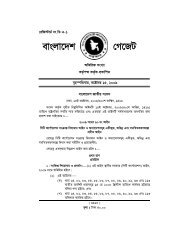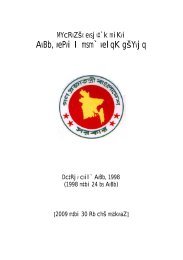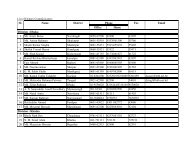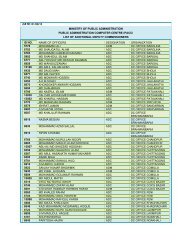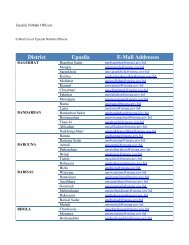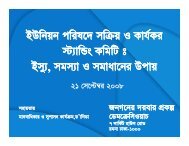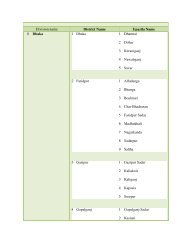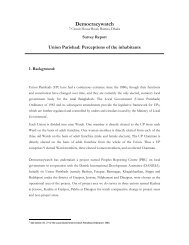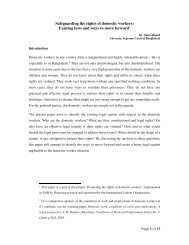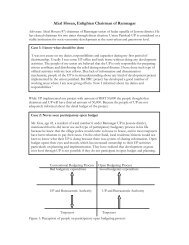Reproductive Decision Making Role among ... - Democracywatch
Reproductive Decision Making Role among ... - Democracywatch
Reproductive Decision Making Role among ... - Democracywatch
- No tags were found...
You also want an ePaper? Increase the reach of your titles
YUMPU automatically turns print PDFs into web optimized ePapers that Google loves.
CHAPTER: ONE1.1 INTRODUCTION:Bangladesh is one of the most densely populated countries in the world, with over 150million people squeezed into an area of 145,000 square-kilometers. There are nearly 920people per square kilometer 1 . With over 63 million of them (nearly half of the totalpopulation) struggling below the national poverty line (less than one dollar a day). Theaverage per capita income is just $440 per year. Although income poverty has fallen overthe past decade, from 58 per cent of the population to 49 per cent, the income disparitybetween rich and poor has widened. The country’s urban population continues to expandrapidly. Already, over 30 per cent of Bangladeshis live in urban areas. If it continues to growat current levels, Dhaka will become the second largest mega-city in the world by 2015, witha projected population of over 22 million (only Tokyo will be larger). The population of Dhakacity (areas under the jurisdiction of the Dhaka city corporation) stands at approximately7.0 million. The city, in combination with localities forming the wider metropolitan area, ishome to an estimated 12.8 million as of 2008 2 . The population is growing by an estimated4.2% per year, one of the highest rates <strong>among</strong>st Asian cities 3 . The continuing growth reflectsongoing migration from rural areas to the Dhaka urban region, which accounted for 60% ofthe city's growth in the 1960s ad 1970s. More recently, the city's population has also grownwith the expansion of city boundaries, a process that added more than a million people tothe city in the 1980s 4 . According to Far Eastern Economic Review, Dhaka will become ahome of 25 million people by the year 2025 5 .With urban population growth, the number of slums and the people who dwell in them arerapidly increasing. With an estimated 3.4 million people live in some 5000 slums of its capitalcity, Dhaka 6 . Dhaka is now experiencing a period of cramped population growth and slumdwellers are mainly responsible for this high growth rate. The population of Dhaka citydoubles in every 11 years whereas it takes 25 years to double the population for the wholecountry. The population of Dhaka city is now 99, 12,908 7 , and a report expects it to swell it to17.6 million up to 60% in the slums by the year 2010 and 25 million by the year 2025 8 ; andnearly equal to the current population size of the world's second largest urban1 BDHS Survey 20072 "Statistical Pocket Book, 2008", Bangladesh Bureau of Statistics3 McGee, Terry (2006-09-27). "Urbanization Takes on New Dimensions in Asia's Population Giants"Population Reference Bureau.4 Ibid5 Planet of Slums by Mike Davis6 Islam N. Slums of Bangladesh Mapping and Census Center for Urban Studies, 2005.7 Source: Bangladesh Population Census, 20018 Source: ADB Report, 1997




